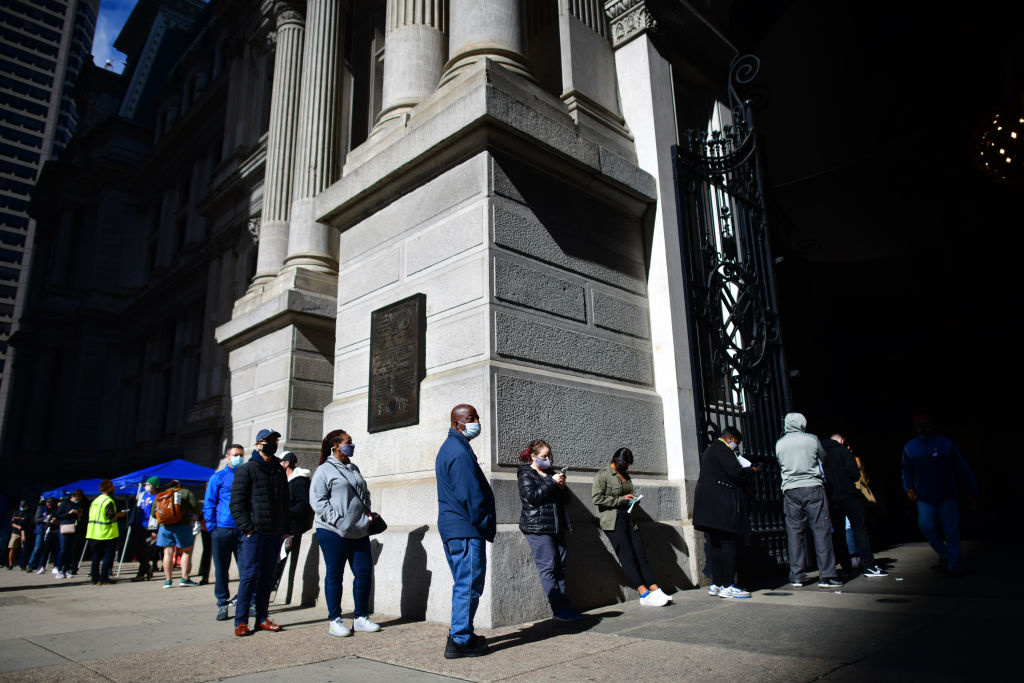Let’s Stop Disenfranchising Citizens and Start Voting Online

Online voting is here and will transform the way we participate in the political process. It will greatly improve turnout, making it easier for the young, the old and the inconvenienced to make have their say. Digital people have a right to digital democracy.
Sure, we’ve grown used to the trouble it often takes to make our seemingly tiny voices heard. Whether you’ll show up to cast that vote can often depend on the amount of enthusiasm or anger you feel, whether you’re willing to brave the lines and deal with arcane registration and ID requirements, or even the weather. In fact, U.S. voter turnout of just above 50% of eligible voters for a Presidential Election trails most developed countries.
And this year, there have been numerous instances of voter disenfranchisement, claimed by both republicans and democrats. Unbearably long lines and thousands of voter registration mistakes in Arizona and New York and a host of strange practices by the party officials like superdelegates, voterless elections, coin tosses deciding caucuses and the threats that nominating conventions will pick whomever the insiders want anyway. It’s no wonder many people feel hopeless in ever changing the way things are. The people whose business is politics do not really want outsiders to have much say in how they run it.
How does one of the world’s highly advanced nations fix this and create a society where the will of its people is truly represented?
The 2016 election cycle has been wild and unpredictable and already offered a genuine experiment in democracy. Among the ways to vote in the Republican Presidential Caucus of March 22nd was online voting (or i-voting). Any registered Republican Party voter with a smartphone, tablet or laptop could cast a vote from anywhere in the world as long as he or she previously registered to vote online (and received a PIN). Conveniently, you could cast your vote at any point between 7AM and 11pm. What’s also great, you could click on the links by the name of each candidate to learn more about their proposals. No longer did you have to make your decisions based on barely-remembered platforms. If you were afraid of fraud or that your vote wasn’t registered, you could check for your choice on the Utah Republican Party’s Bulletin Board by using the receipt number you got after casting the i-vote.
UK-based Smartmatic is the leader in online voting technology and provided the support for Utah’s i-voting venture. Smartmatic claims to have so far processed 2.5 billion verifiable votes “without a single discrepancy”. Since being inspired by Florida’s “hanging chad” fiasco in the 2000 elections, the company has developed the tech that has been contracted for electronic voting by cities and states in Chile, Venezuela, Argentina, Belgium, the Philippines, parts of Africa and other locations. The founder and CEO of the company Antonio Mugica makes the case that their work leads to peaceful elections and greater transparency in transforming governments. Such political stability, in turn, leads to economic improvements.
The main international i-voting powerhouse has been, surprisingly, the Baltic nation of Estonia. The country of 1.3 million has been allowing people to vote online since 2005 over 8 nationwide elections. About a third of the Estonian electorate has cast their votes via the internet in the past two elections. Technologically, the system developed by the Estonian Cybernetica is secured by digital or mobile ID authentication and encryption.
Let the Prime Minister of Estonia Taavi Rõivas explain to you how they vote.
Of course, i-voting has its fair share of naysayers. In particular, many cybersecurity experts feel like online voting is not safe, can be manipulated, and is open to cyberattacks from hackers and malicious governments that can alter the outcomes. A study led by a team of experts, mostly from the University of Michigan, cast serious shade on the security of Estonia’s i-voting setup in a 2014 study. The Estonian National Electoral Committee dismissed their concerns by maintaining that the voting system had the correct safeguards and stood up to scrutiny and tests over the years.
Utah’s 2016 voting experiment also came under scrutiny for all manner of potential failures, from undue political influence by members of the tech company to breeches of privacy and potential vote-buying. None of these or previously-feared security disasters related to i-voting materialized, however. There were some issues to be sure, but they were mainly caused by the unusually high turnout and unexpected overloading of the voting website.
Will i-voting be implemented on a wider scale in the next election cycle? President Obama called for online voting in his recent address at the South by Southwest Festival. “We’re the only advanced democracy in the world that makes it harder for people to vote, “ said the President in his address. Whatever side of the political spectrum you may be on, it’s hard to argue that greater participation by the citizens will not lead to greater democracy.
Clearly upgrading the way we vote will take time. But it is integral for our democracy to be made more democratic. Not only should the voting be taken online, but the same should happen to the registration process. It should be clear, universal, easily checked and immediate. And until we demand that the entrenched political forces implement the changes, it’s back to the line.





